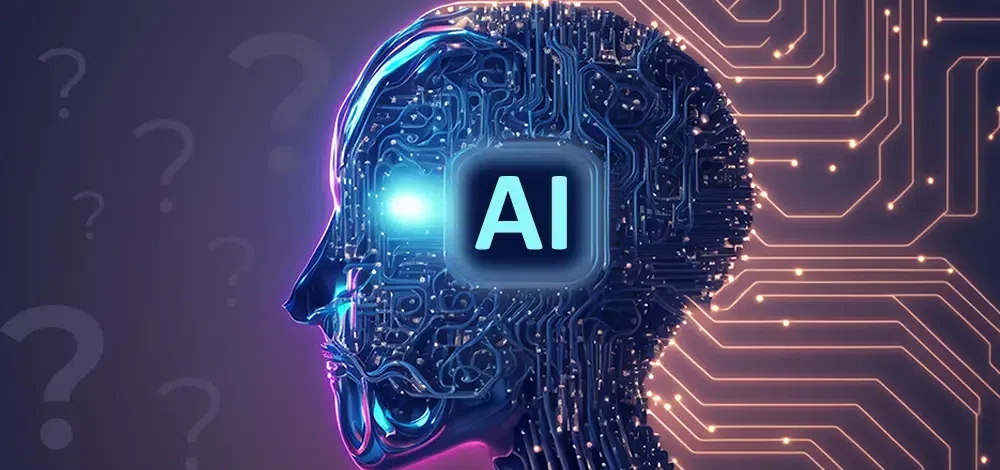Artificial Intelligence (AI) is a rapidly evolving field that has the potential to revolutionize various industries. In this article, we will delve into what AI is and how it works, shedding light on the different types of AI and the techniques used to power these intelligent systems.
Contents
What is Artificial Intelligence?
At its core, AI refers to computer systems that can perform tasks typically associated with human cognitive functions. These tasks include interpreting speech, playing games, identifying patterns, and more. AI systems learn how to perform these tasks by processing vast amounts of data and searching for patterns to model their decision-making. In some cases, humans oversee the learning process, reinforcing good decisions and discouraging bad ones. However, certain AI systems are designed to learn without supervision, refining their capabilities by repetition and trial and error.

Strong AI vs. Weak AI
When discussing AI, a distinction is often made between strong AI and weak AI. Weak AI, also known as narrow AI, focuses on automating specific tasks, typically outperforming humans within certain constraints. Examples of weak AI include email spam filters, website recommendation engines, conversational chatbots, and language translators.
In contrast, strong AI, also referred to as artificial general intelligence (AGI), has the ability to solve problems it hasn’t been explicitly trained for, much like a human can. However, strong AI remains theoretical and is yet to be developed. It is the kind of AI we often see depicted in popular culture and science fiction.
How Does AI Work?
AI systems employ various techniques to achieve their capabilities. Let’s explore some of the key techniques used in AI:
Machine Learning
Machine Learning (ML) algorithms enable computers to learn and improve performance without being explicitly programmed. These algorithms analyze historical data to predict new output values, making them increasingly accurate over time. Machine learning encompasses both supervised learning, which utilizes labeled data sets, and unsupervised learning, where the expected outputs are unknown due to the use of unlabeled data sets.
Deep Learning
Deep Learning is a type of machine learning that utilizes neural network architectures inspired by the human brain. These neural networks consist of multiple hidden layers, allowing the system to process data deeply, establish connections, and weigh inputs for optimal results.
Neural Networks
Neural networks are algorithms that mimic the structure of the human brain. Composed of interconnected nodes or neurons, neural networks enable machines to identify patterns, establish relationships within data, and learn from mistakes. Neural networks find applications in various domains such as image recognition, speech understanding, and language translation.
Natural Language Processing
Natural Language Processing (NLP) focuses on giving machines the ability to interpret written and spoken language, similar to humans. NLP combines elements of computer science, linguistics, machine learning, and deep learning to analyze unstructured text or voice data and extract relevant information from it. NLP finds applications in speech recognition, virtual assistants, and spam detection, among others.
Computer Vision
Computer Vision deals with machines’ ability to process visual media, such as images and videos, and extract useful insights. Deep learning and convolutional neural networks are leveraged to analyze and tag images, enabling computers to discern visual shapes and patterns. Computer vision is employed in image recognition, object detection, facial recognition, and even self-driving cars.
Types of Artificial Intelligence
Artificial intelligence can be classified into four main types:
Reactive Machines
Reactive machines perceive the world around them and react accordingly. They carry out specific commands and requests but lack the ability to store memory or rely on past experiences for decision-making. This type of AI is useful for specialized duties and tasks. Examples of reactive machines include Netflix’s recommendation engine and IBM’s Deep Blue, which achieved remarkable success in playing chess.
Limited Memory AI
Limited memory AI can store previous data and predictions to inform its decision-making process. By gleaning insights from past experiences, this type of AI can predict future outcomes. Models are continuously trained with new data to improve analysis, or AI environments are constructed for automatic training and renewal. Limited memory AI can be seen in chatbots like ChatGPT and self-driving cars.
Theory of Mind
The concept of theory of mind, though not yet a reality, revolves around AI systems perceiving and understanding human emotions. These AI systems would then use this information to predict human behavior and make decisions autonomously.
Self-Awareness
Self-aware AI is a hypothetical form of artificial intelligence that possesses self-awareness and consciousness, similar to humans. It is aware of its own existence and can understand the emotional state of others. While self-aware AI currently remains within the realm of theory, it ignites fascinating discussions about the potential future of AI.
FAQs
Q: Can AI systems replicate human intelligence?
AI systems, particularly strong AI or AGI, aim to emulate human learning and thinking. While AI has made tremendous strides, achieving true human-like intelligence remains a theoretical goal.
Q: What are some real-world applications of AI?
AI has a vast range of applications across industries. Some notable examples include healthcare diagnostics, autonomous vehicles, fraud detection, personalized recommendations, and natural language processing.
Q: Does AI pose any risks?
Like any powerful technology, AI presents certain risks. Concerns include job displacement, privacy implications, biases in algorithms, and the potential for AI systems to make critical mistakes that impact human lives. Responsible development and governance are crucial to mitigate these risks.
Conclusion
Artificial Intelligence is a rapidly advancing field that holds immense potential to transform how we live and work. From machine learning to computer vision, the techniques powering AI continue to evolve, offering remarkable opportunities across diverse industries. As AI technology progresses, it is crucial to approach its development and deployment with careful consideration and ethical standards.
For more information and updates on the latest tech trends, visit Virtual Tech Vision. Stay informed and embrace the transformative power of Artificial Intelligence.








